
by World Moms Blog | Dec 3, 2014 | 2014, Awareness, Being Thankful, Caring, Casting a Wider Net, Economy, Eye on Culture, Guest Post, Helping, Human Rights, Humanitarian, Inspirational, International, Marketing, Motherhood, Multicultural, Philanthropy, Poverty, Rape, Social Equality, Social Good, Social Media, Tragedy, USA, Women's Rights, World Interviews, World Tour
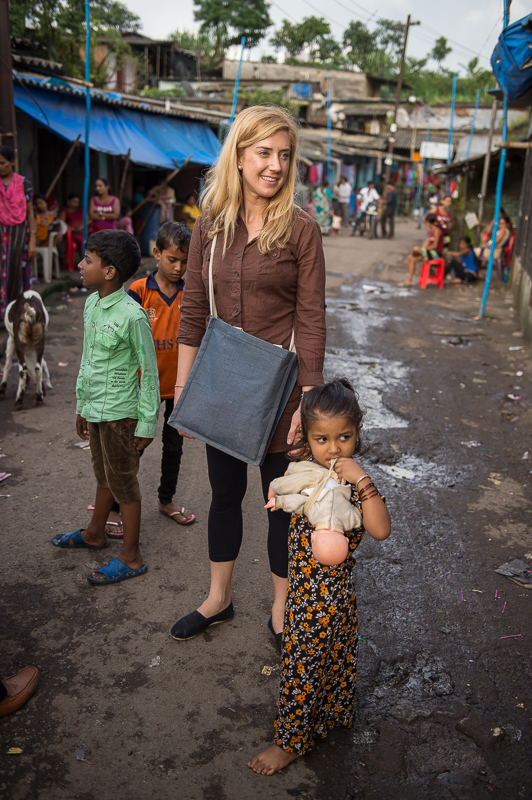
Jane Mosbacher Morris,
Founder of To the Market
What is To the Market and how did it get started?
TO THE MARKET | Survivor-made Goods (TTM) combines the powers of commerce and storytelling to empower the world’s most courageous survivor populations. We’ve developed a three-pronged social enterprise model that we believe reflects the needs of organizations employing survivors of abuse, conflict, or disease to help ensure that these organizations can continue to provide steady work to the survivors.
Our goal is that the survivors in our network eventually achieve economic independence, meaning that they aren’t dependent on someone or something else.
Our model includes (1) promoting survivor-made goods via our multiple distribution channels, including pop-up shops, custom sourcing, retail partnerships, and our online marketplace; (2) offering a platform for survivors and their champions to share their stories through TTM’s Stories and Huffington Post blogs; and (3) providing tailored services, such as trend forecasting and basic mental health resources, to our partners to improve production and management.
I started TTM after a trip to Kolkata, India revealed a way to impact the most vulnerable survivor communities by offering them an opportunity to earn an income.
I saw the light in the eyes of the survivor turned artisans when they were given the chance to earn—they wanted the dignity of work. I began speaking to incredible people all over the globe (including in the U.S.) who had created social enterprises to employ different survivor populations, usually by employing them to produce handicrafts.
I heard really positive feedback about the model of employing survivors (and all of the incredible benefits to the self-esteem and trajectory of the survivor and his or her children). However, I also heard about the challenges of making this model work—TTM aims to help augment these challenges.
Who are the artisans at To the Market?
TTM identifies and teams up with existing organizations currently employing survivors of abuse, conflict, or disease. We call these organizations “local partners”. Local partners consist of non-profits and for-profit social enterprises that have already set up shop, hired, and trained survivors to produce products.
TTM focuses on certain types of survivor populations. This includes, but is not necessarily limited to; survivors of abuse, such as survivors of domestic violence, physical and sexual abuse, and human trafficking; survivors of conflict, such as war widows, refugees, or persons living in conflict/post-conflict states ; or survivors of disease, including populations living with HIV/AIDS, leprosy, or physical disabilities.
We have partners across the globe, including in the U.S., South America, Africa, and Asia.
Do you see a pattern in consumers’ behavior when it comes to shopping responsibly?
I think there is a desire to shop more responsibly, but it often comes down to what people can afford. I am really proud of the fact that our local partners make a variety of products at all different price points—on-trend bracelets for under twenty dollars to timeless cashmere scarves for several hundred dollars.
Can you share a personal story that you think best represents the mission of the online shop?
I recently spent nearly a month in Nepal and India visiting with many of our local partners. I was particularly reminded of how transformational economic independence can be to these survivors when I spent time with their children—their daughters, especially. Most of the survivors we work with are women. When the women achieve economic independence, their daughters are so much less likely to be exploited. We recently wrote about a shelter in New Delhi, India that employs HIV/AIDs infected and affected women. You can see the video about the shelter and read about it on our Stories blog here.
How did you get involved with this work?
I began my career in counterterrorism with a focus on the intersection of women and security. Much of my mission was to try to elevate the role of women in national security-related issues, but I consistently found that women with some form of economic independence had so much more leverage in their family, community, and country than those with none.
That (five year) experience got the wheels turning quickly about the importance of economic independence in empowering vulnerable populations. When I went to work for the McCain Institute on human trafficking, I really saw how vital it was for survivors of some sort of trauma (whether it be abuse, conflict, or disease) to have access to some income.
It brings me extraordinary joy to be a part of the life-changing process of gaining even the slightest bit of independence.
What are your favorite picks for this holiday season?
- For Mom: I love this 100% cashmere scarf hand spun by master spinners in the Kashmir Valley! Each scarf contains the women’s initials that made it.
- For Dad: I love this red spice and merlot trivet. It’s the perfect size for cuff links, receipts, or coins and is neutral enough to sit comfortably on a nightstand or office desk. It’s hand-woven by craftswomen in Rwanda.
- For college kids: I have to suggest the patrice signature bag, which I am currently carrying by No41. It has two major points of impact!
- First, it provides a stable job and sustainable income to a young woman transitioning into a life of independence from living in an orphanage in Rwanda.
- SECOND (and perfect for the college student), it provides 240 meals to a secondary student in Rwanda!
- For kids: I love these brightly colored elephant ornaments (in pink or blue) hand-sewn by women in the Ivory Coast. Pink and blue patterns make it easy to pick for a boy or girl.
- For the office or book/dinner club gift exchange: I selected either a Sari Coin Purse hand-sewn by human trafficking survivors in Kolkata, India or this Hope Ornament pounded out of recycled metal oil drums in Haiti. Even if you don’t have a tree, you can hang this Hope sign up to encourage you! Both come in under $10, the perfect price point for small gifts.
- I am also including a couple “splurge on yourself “ items because I feel like most moms that I know only spend on others! I’ve included the Holiday Festive skirt, because it’s the perfect pattern for this time of year and also because it’s made by stay-at-home moms in Belize who are caring for sick children. Or, this Soledad Peru bag. The Suede straps and bottom make it strong enough to carry six wine bottles (yes, please!). The bag was made by women weavers in a valley deeply scarred by the Shining Path.
How can World Moms help spread the word about shopping responsibly this holiday season and beyond?
What a great question! Helping to get the word out about social enterprises like TO THE MARKET via social media and blogging is a tremendous help, in itself. Someone doesn’t have to have a huge following, either! Just telling your family or friends that these social enterprises exist makes a difference. So much of why so many social enterprises struggle is because they don’t have the marketing budget that big box retailers have to tell their story. There is nothing more flattering (or effective) than a personal referral!
This is an original interview with To the Market founder, Jane Mosbacher Morris, for World Moms Blog. You can learn more about the good work and great products To The Market sells by visiting their website (http://www.tothemarket.com/goods)
The image in this post is used by permission from To the Market.
World Moms Blog is an award winning website which writes from over 30 countries on the topics of motherhood, culture, human rights and social good. Over 70 international contributors share their stories from around the globe, bonded by the common thread of motherhood and wanting a better world for their children.
World Moms Blog was listed by Forbes Woman as one of the "Best 100 Websites for Women 2012 & 2013" and also called a "must read" by the NY Times Motherlode in 2013. Our Senior Editor in India, Purnima Ramakrishnan, was awarded the BlogHer International Activist Award in 2013.
More Posts
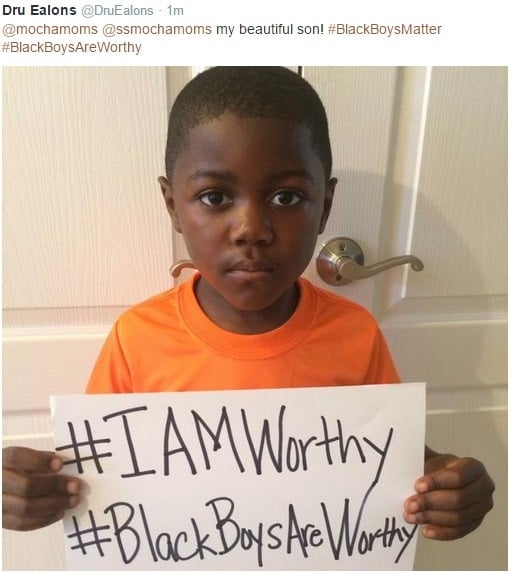
by shootiegirl | Nov 26, 2014 | 2014, Awareness, Boys, Family, Gun Violence, Human Rights, Motherhood, Parenting, Prejudice, Respect, Shootie Girl, Social Equality, Tragedy, World Events, World Moms Blog, World Voice
#BlackBoysMatter
Positive Images of Black Boys in Protest of Ferguson Tragedy

Mocha Moms, Inc. members, many of whom are the mothers of sons, are outraged by the failure to indict Darren Wilson in the Michael Brown, Ferguson grand jury case. But we realize we can’t change the decision, nor bring back Michael Brown, Trayvon Martin and countless other unarmed black boys, and men who have lost their lives. We chose to take to social media and flood our Facebook, Twitter and Instagram pages with positive images of our sons with hashtag #blackboysmatter. This is our way of peacefully organizing via the power of social media to change the way our society views black males. At the time of this article, our social media campaign has garnered nearly 5 million impressions and that number is steadily growing.
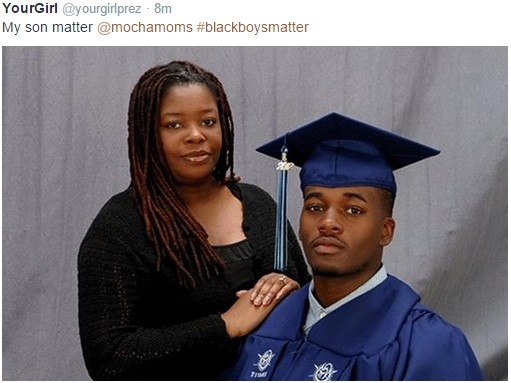
Our sons are not thugs, robbers or murderers. They are educated, professional, philanthropic, law-abiding men who give back to their communities and families. Their precious faces should not evoke a sense of fear simply because they are black.
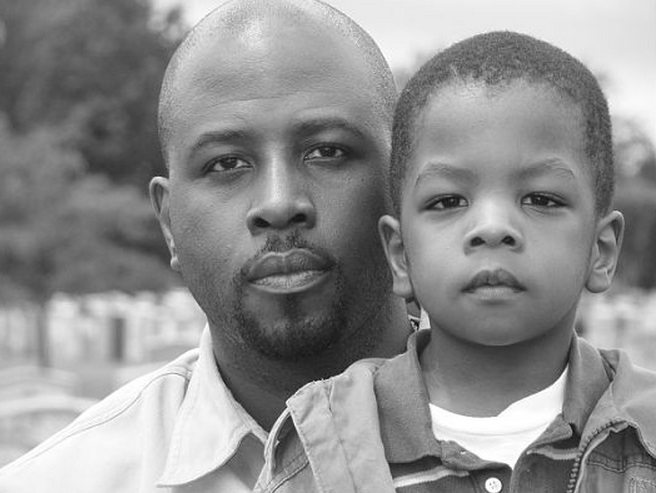
We are not saying that all lives are not precious and equally important, or that our girls, white or brown children don’t matter. But these children are not being gunned down like animals in the street.
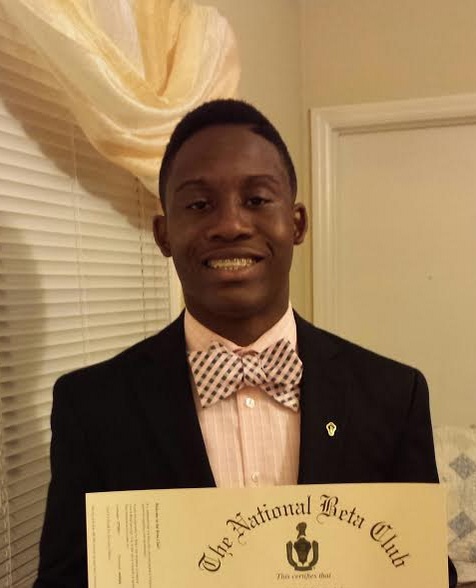
We invite moms from around the world, no matter the race, to join us in solidarity and help us spread the word by sharing photos of your precious sons of any color with #blackboysmatter. But don’t stop there!
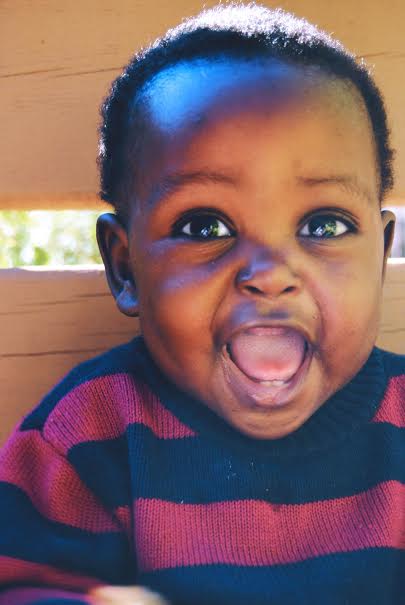
Talk to your children about equality. Share the struggles of people who are not treated fairly and are discriminated against. Raise them to understand that no matter the color of someone’s skin, they deserve the same rights as everyone.
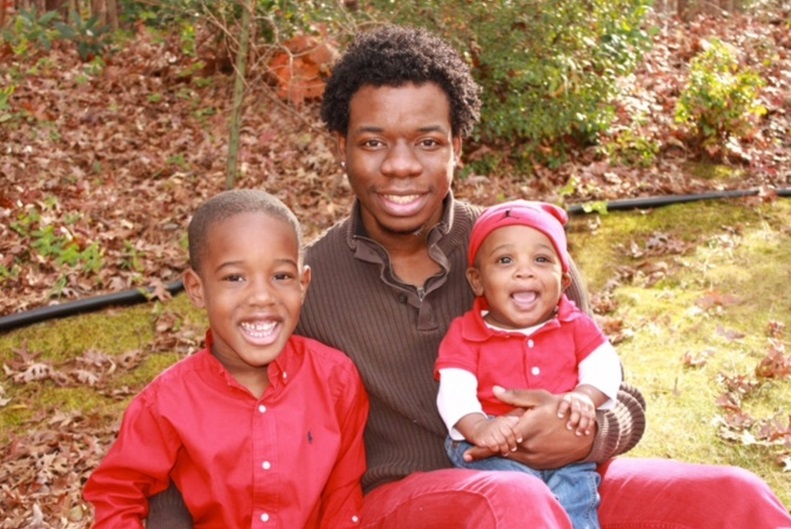
We shudder to think that civil rights icon and scholar, W.E.B. DuBois, was accurate in his statement;
“A system cannot fail those it was never meant to protect.”
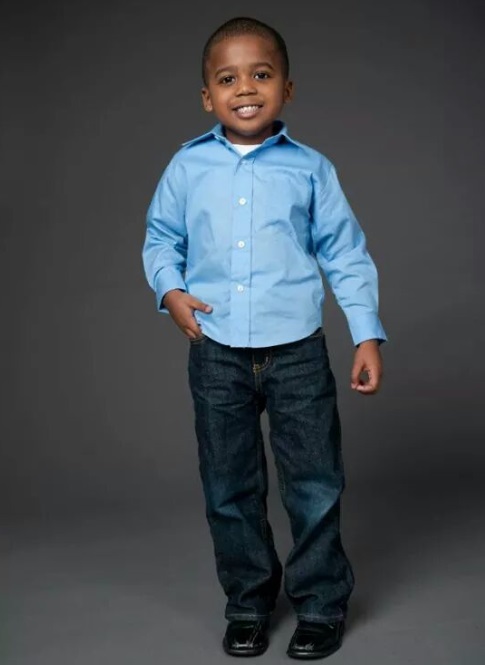
This is an original post written by LaShaun Martin, National Director of Social Media, Mocha Moms, Inc. for World Moms Blog.

LaShaun Martin is National Director of Social Media and Community Service for Mocha Moms, Inc. a national 501(c)(3) support group for stay-at-home mothers of color. LaShaun currently works to manage and promote community service programs for the organization to include teen mentoring, Boys Booked on Barbershops literacy program, America’s Promise, MomsRising, Moms Clean Air Force, U.S. Environmental Protection Agency, and U.S. Department of Education. She is a frequent guest of the White House for events focused on women and girls including tea with First Lady Michelle Obama.
LaShaun holds a Bachelor of Science degree in Business Administration. LaShaun spent 20 years with the State of California, the State of Maryland Department of Corrections managing public education, research, FBI programs and later Hewlett Packard. LaShaun now serves as CEO and Designer of her own company, Shootie Girl™ Custom Rhinestone Apparel and Shootie Girl™ Blog – Positive Messages for Women and Girls. Shootie Girl™ designs have been featured with CNN’s Soledad O’Brien, Sherri Shepherd of The View, Carol’s Daughter, Clinique Cosmetics, Jack and Jill of America, Inc., Still Standing Movie, Dr. Sherry Blake of Essence Magazine and Aja Dantzler of R&B singing couple Kindred and the Family Soul and Blogalicious.
LaShaun is passionate about giving back and ensures her company reflects a heart for service by donating many “t-shirts for a cause” to Heart of Haiti, the women of Zimbabwe and The United Nations Foundation Shot@Life Campaign. She also serves on the Advisory Board of MOMentumNation and the Epilepsy Foundation.
LaShaun’s greatest passions are her husband, two lovely daughters and music.
Blog: http://www.shootiegirl.net
Custom Rhinestone Apparel: http://www.shootiegirl.com
More Posts
by Mama B (Saudi Arabia) | Nov 26, 2014 | Adolescence, Awareness, Boys, Brothers, Culture, Education, Eye on Culture, Family, Gender, Girls, Husband, International, Life Lesson, Motherhood, Older Children, Parenting, Puberty, Relationships, Saudi Arabia, School, Teenagers, Womanhood, World Motherhood
I grew up in a house full of girls with one baby brother, who was so much younger than me that our friends and social lives didn’t overlap.
Now that I am the mother of three boys and one girl, I am learning many things I never knew about boys: they are more straightforward, easier to read, and, honestly, easier to persuade than girls. Boys wrestle–a lot. Even when they haven’t got the hang of walking yet, they wrestle. (I still don’t know why.) Boys are more emotional than I expected, and more sensitive.
I know there’s a lot more to learn about raising boys, and I’m excited to do it–especially because I can call in their father whenever something freaks me out.
Despite my growing expertise in raising boys, something recently caught me off guard. Something obvious in our society, but not so prevalent in my ‘tribe’ (which is what I call my close family–mother, father, aunts, uncles, cousins, etc.).
My eldest turned 11 this year, and is in the phase between boy and teenager. And I find myself surprised to discover that our society’s segregation of men and women is changing my relationship with my own son.
I was totally unprepared for the separation that occurred when he moved from the little school to the big school. I went from being able to walk into his class, to speak to his teacher, and to meet his friends and their moms, to having to drop him off and pick him up outside the school gate (but not right in front of it, where the other boys could see us).
No more going into the school, unless I make an appointment with the headmaster and go to his office to speak with the teachers. (And even that is not permissible in most boys’ schools, the majority of which would not even allow a woman on the premises. The same is true for girls’ schools, which don’t permit men on the premises.)
My son can no longer go into the all-women area of the malls. In a few years, he won’t be allowed in any area of the mall without a ‘family’ for fear he will terrorize the girls. (Ironically, some young teenagers wait outside the malls and approach older women, or women with children, and ask them to pretend they are one family to gain entrance into the mall.)
Soon, my son won’t invite his friends over when his sister is home, although he could still invite cousins and close family friends.
There are so many unwritten rules concerning the separation of girls and boys, and a million variations. For some families, it’s pretty black and white: unless he is your brother or father, or unless she is your sister or mother, you don’t spend time with them. It also depends upon the region. In the eastern or western provinces, strict segregation is not as prevalent as it is here in the central region. In seacoast areas, people have the benefit of interacting with many cultures, and are therefore more forgiving.
I am baffled by how our society has become so segregated. Throughout the early history of Islam, segregation wasn’t practiced. Modesty and chastity, yes. Total segregation, no. I do not even think it was part of our culture as Saudis. At least, not to the extent it is today.
Until recently, Bedouin women were expected to welcome travelers into their tents, and to make them coffee, and even dinner, regardless of whether her husband was there. Yes, most would have had their faces covered (again, a cultural custom, not religious one), but they interacted with men all the time. It’s only in recent years that things have changed. Some put it down to the influences that came into Saudi when it was united. Others say it is a reaction to how fast we were exposed to the outside world, and how quickly we went from tribal life to modern-day life.
Theories aside, I’m facing the reality of being shut out of a part of my son’s life and of him being shut out of mine.
When I explained my concern to one of his teachers (over the phone) he said, “You can’t follow him around all of his life!” As if I were a stalker! Am I being a stalker? Hmmm, I wonder how involved I would be in his day-to-day school life if I were?
My biggest fear is that if he gets caught up in the wrong crowd, segregation makes it easier in certain houses with absent fathers to make mistakes and do stupid stuff. I thank God his father keeps an eye on him, and that he still fills me in about his day and talks to me when he is upset. If we can continue to talk, I think I may be okay.
Perhaps I just don’t like not being in control of the situation, or perhaps it’s that I don’t have the choice.
Would you naturally step back from your son’s day-to-day life when he turns 11 or 12? Would you withdraw from knowing his friends and supervising his outings?
It’s all foreign territory for me now, and I am learning to deal with it as best I can.
This is an original post to World Moms Blog from our contributor in the Kingdom of Saudi Arabia and mother of four, Mama B.
Photo credit: Dr. Coop under Flickr Creative Commons License

Mama B’s a young mother of four beautiful children who leave her speechless in both, good ways and bad. She has been married for 9 years and has lived in London twice in her life. The first time was before marriage (for 4 years) and then again after marriage and kid number 2 (for almost 2 years). She is settled now in Riyadh, Saudi Arabia (or as settled as one can be while renovating a house).
Mama B loves writing and has been doing it since she could pick up a crayon. Then, for reasons beyond her comprehension, she did not study to become a writer, but instead took graphic design courses. Mama B writes about the challenges of raising children in this world, as it is, who are happy, confident, self reliant and productive without driving them (or herself) insane in the process.
Mama B also sheds some light on the life of Saudi, Muslim children but does not claim to be the voice of all mothers or children in Saudi. Just her little "tribe." She has a huge, beautiful, loving family of brothers and sisters that make her feel like she wants to give her kids a huge, loving family of brothers and sisters, but then is snapped out of it by one of her three monkeys screaming “Ya Maamaa” (Ya being the arabic word for ‘hey’). You can find Mama B writing at her blog, Ya Maamaa . She's also on Twitter @YaMaamaa.
More Posts
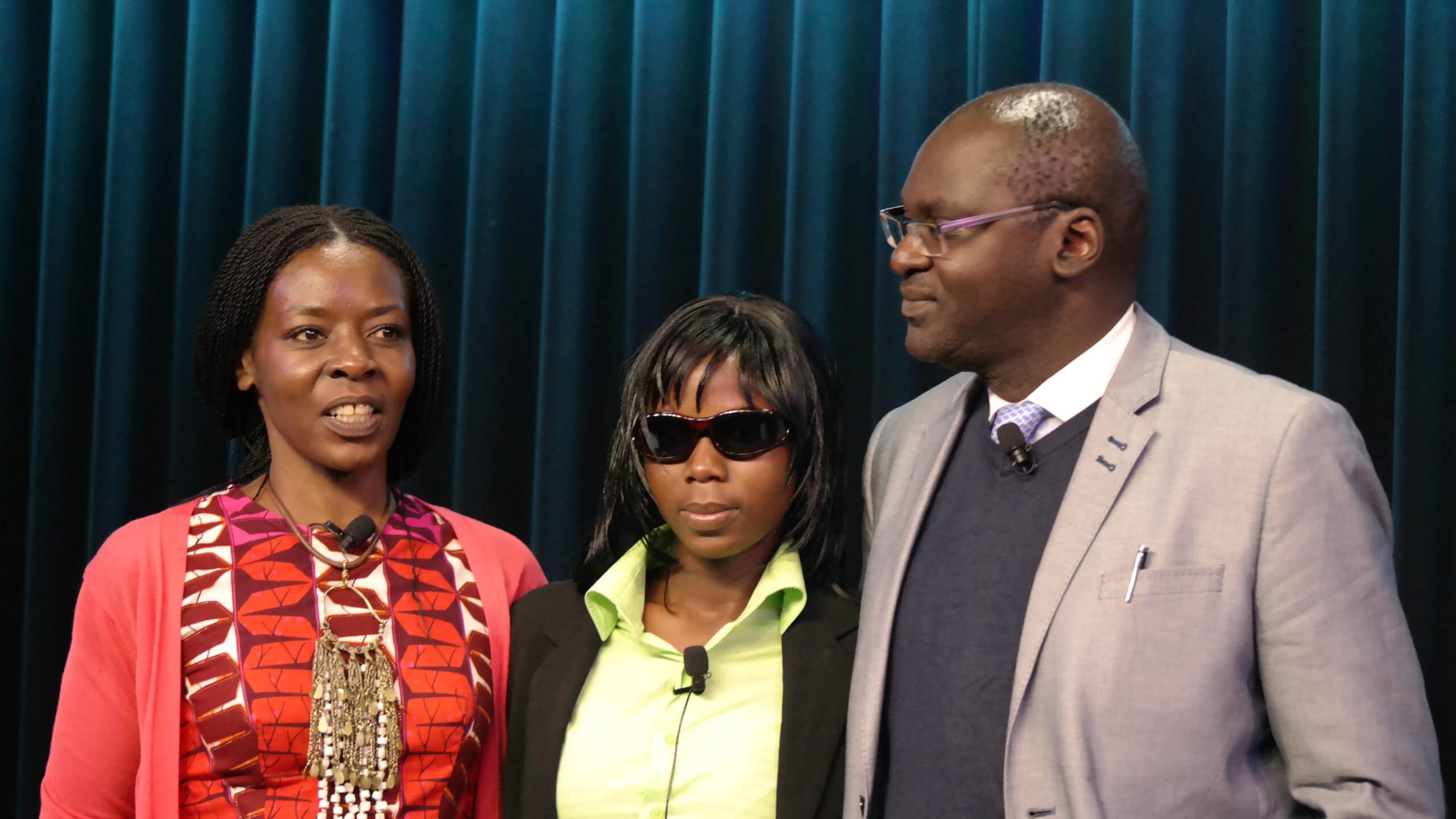
by Cindy Levin | Nov 25, 2014 | 2014, Africa, Awareness, Education, Girls, Human Rights, Humanitarian, Social Good, World Moms Blog, World Voice
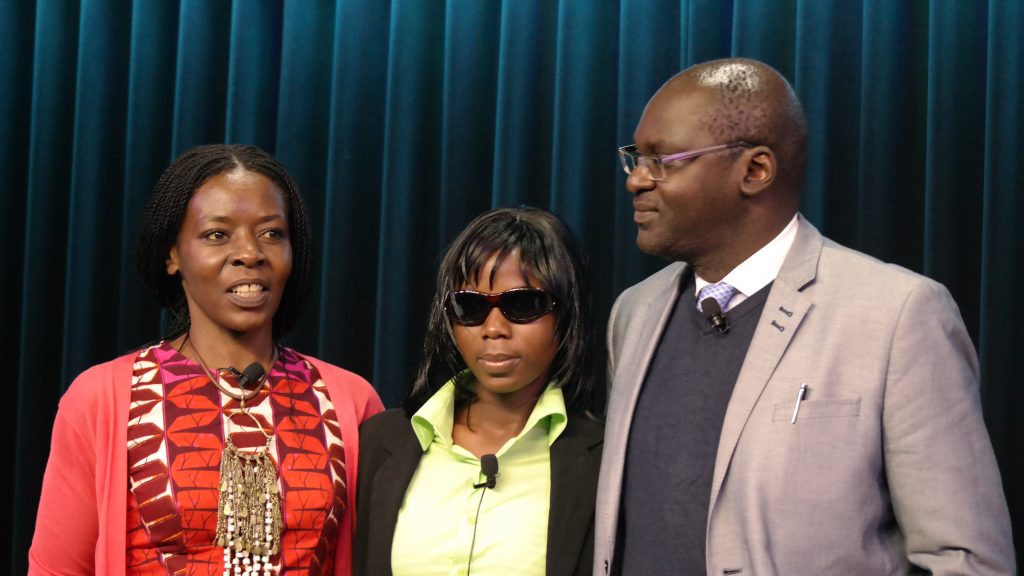
They sat in the back row of the ONE Campaign’s AYA Summit with me in Washington D.C., keeping to themselves and wearing sunglasses in an already darkened room. A computer on their laps, two teenage girls whispered to one another as together we watched videos and heard speakers talking on all ranges of topics affecting girls and women around the world. Vaccines, education, access to electricity, human trafficking, genocide…it was both a heavy and inspiring range of topics as speakers bounced back and forth between storytelling about problems and discussing solutions. Sitting with them and trying (unsuccessfully) to engage them in friendly conversation during breaks, I had no idea how intimately these topics were affecting their lives…
I sat in the back because back row chairs sit beside outlets and I could recharge my phone easily. They sat in back shadows for a very different reason. Because of uncertainty…a desire for anonymity…maybe even fear. One of the two had more immediate reason for concern than the other. Without our knowledge, she was nervously waiting all day for her turn to speak to us and tell us her story.
Her name was Saa* and seven months ago she was kidnapped by Boko Haram from her school in Nigeria.
Last April, the whole world exploded in outrage demanding for these terrorists to #BringBackOurGirls. And then…we heard nothing. Governments searched. Leaders demanded. Parents wept. And we heard nothing.
Then, as if out of the blue, Saa appeared in our midst ready to speak at the AYA Summit to a group of parents armed with laptops and 45 million social media followers.
This is her story.
On April 14, kidnappers from the terrorist group Boko Haram entered Saa’s school in Chibok with a plan to capture all the girls who studied and slept at her school. At 11:30PM, Saa and her classmates heard terrible noises of violence. Scared, she called her father and asked what she should do. He told her to stay where she was and wait for help.
No help came.
Collecting all the girls to a common area, kidnappers started burning everything from the school. Surrounded by weapons, the girls were told if they shouted or ran away, they would all be killed. Gunmen started demanding information about the location of a local mission, the location of the boys in the school (there were no boys), and where the school kept food. Two girls showed them where the food was and the guards emptied the store of food supplies.
They forced them away from the school and gathered them under a big tree, bringing vehicles including small cars and big trucks. The girls were ordered to enter big, high trucks by climbing up upon a small car and into the truck. “They said if any girl did not want to go into the trucks, she should come out and they would kill her,” Saa told us. After moving to another village, they moved the girls from trucks and started filling the car with the girls sitting on laps. There was not enough room for everyone to sit and three girls were left outside. The men asked the first girl if she was Muslim or Christian. She was Muslim, so they moved on and asked the same of the next girl who – despite being Christian – replied that she was Muslim out of fear for what they might do to her. When the third girl admitted that she was Christian under questioning, one of the kidnappers decided he should kill her right there and let the Muslim girls go. Other kidnappers fortunately intervened and convinced him not to kill her then, and there. Amazingly, those three girls were released for lack of room, but told not to turn back or everyone would be killed. Those girls ran away to the town.
As the vehicles started to travel and moved past one village, a few girls started to jump from the trucks. Saa decided for herself that she would rather jump and die than face the uncertainty of what lay ahead. She told her plan to friend saying, “I would rather that my parents have to bury me in a coffin.” Her friend agreed to jump, too. The truck continued through the middle of a forest in the dark with cars following behind. The girls waited for an opportunity when the following cars were not within sight then leapt from the trucks, Saa first and then her friend. After the jump, Saa discovered her friend had injured her leg and was unable to move very far. She helped her friend into the forest away from the road, so they would not be discovered. They moved as far as they could and slept in that spot until morning.
In the morning – with her friend still unable to travel – Saa sought out help. The first person Saa met was a shepherd. She asked him for help, but he refused out of fear for his own safety. He advised them to wait until 9 or 10 AM when some people may travel that way going to market and possibly help them. Saa argued that not many people would come by because the violence from the night before would make them afraid to come. They must move quickly because the “bad people” may follow that road again. Finally, he agreed to help and carried Saa’s friend on a bicycle.
On the road, they did meet people who were coming to look for their daughters who helped bring the girls back to Chibok. Then, they went back to their hometown. When they arrived home, Saa was reunited with her parents who met her in tears. All of her relatives were weeping because of the ordeal.
Saa didn’t cry as she related her story. She spoke softly and quickly in a matter-of-fact manner. I wondered how many times she had told her story and if sticking just to the facts helped her remain detached enough to get the story out. Even though this was only the second time she had spoken publicly about it, I imagine she must have related it many times to her family and to authorities trying to glean clues to recover her classmates who are still missing.
In the audience, we sat in shock…surprised to be in her presence and horrified by the audacity of Boko Haram to violate their freedom in this way. Most of us were mothers who had a very visceral reaction to the thought of someone stealing our daughters away in the night to be sold, raped, married, or killed.
I thought about that horrible conversation Saa’s father in which he faced a terrible choice of how to advise his daughter over the phone. Would you tell your daughter to run and risk her being shot in the back? Or would you tell her to wait for help, knowing that she might be trafficked and violated if no one comes to help? I thought about the shepherd, afraid for his life. He balked, but did the right thing in the end. I admired Saa’s skillful persuasion in arguing with him to provide aid and her courage to leap from a moving truck in the midst of a forest full of danger from animals and humans.
To my horror, on my Twitter feed that very night as we gathered around Saa to thank her for her courage and her story, I saw 25 more girls had been captured by these monsters. In a video delivered 200 days after Saa’s kidnapping, Boko Haram leaders scoff at the idea at negotiating for release along with ceasefire agreements. The group’s leader, Abubakar Shekau, flanked by gunman reportedly said, “The issue of the girls is long forgotten because I have long ago married them off…Don’t you know the over 200 Chibok schoolgirls have converted to Islam? They have now memorized two chapters of the Koran.” According to A World At School, Boko Haram claims to be holding 500 women and girls against their will.
I write this blog because the issue of the 219 Chibok schoolgirls is not forgotten. Not by Saa. Not by me. Not by a long shot. Saa told her story and gave us permission to use her picture for a very specific reason…to have us share it with others. If sharing her picture and her story is a way to get people to remember why we stand up for girls’ education and why the U.S. should put pressure on the Nigerian government to stop these atrocities and recover the victims, then that’s what I will do. And that’s what I ask you to do.
1. Continue to use the #BringBackOurGirls hashtag on Twitter. When you see news about it, tweet it to your networks and your members of Congress
2. Use Saa’s story and write your own blogs or letters to the editor about it to keep it in the media and social media
3. Be a champion for global girls’ education. As I said in my World Moms Blog post last may, What Can Americans Do for Abducted Nigerian Schoolgirls?, “The welfare of the kidnapped girls rests in someone else’s hands in the short-term, but I advocate against poverty and injustice wth an eye for the long-term. While we wait and we pray for these girls, shouldn’t we be using this anger and anguish to secure a future for all girls?”
I’d like to leave you with a happy thought about Saa’s education. Saa, her friend, and two other escaped Chibok schoolgirls have been brought to the United States where they will be able to study freely alongside other young women who don’t know what it means to live in fear for the right to learn. Her family knows she is safe. Her future is in her own hands. But she continues to fear for her classmates…as do we all. Read her story again. Think on it. Then, act on it.
*”Saa” is a pseudonym she uses for her own protection
This is an original post written by Cindy Levin for World Moms Blog.
Cynthia Changyit Levin is a mother, advocate, speaker, and author of the upcoming book “From Changing Diapers to Changing the World: Why Moms Make Great Advocates and How to Get Started.” A rare breed of non-partisan activist who works across a variety of issues, she coaches volunteers of all ages to build productive relationships with members of Congress. She advocated side-by-side with her two children from their toddler to teen years and crafted a new approach to advocacy based upon her strengths as a mother. Cynthia’s writing and work have appeared in The New York Times, The Financial Times, the Washington Post, and many other national and regional publications. She received the 2021 Cameron Duncan Media Award from RESULTS Educational Fund for her citizen journalism on poverty issues. When she’s not changing the world, Cynthia is usually curled up reading sci-fi/fantasy novels or comic books in which someone else is saving the world.
More Posts - Website
Follow Me:


by Kyla P'an (Portugal) | Nov 21, 2014 | 2014, Adolescence, Awareness, Childhood, Girl Child, Girls, Kids, Life, Life Lesson, Media, Milestones, Motherhood, Older Children, Parenting, Puberty, Teenagers, World Motherhood, Youth

The Wicked Witch of the West
Eight years ago I had my first child, a daughter. Like most new parents, I got all sorts of advice and did a great deal of information gathering; particularly on those uncharted, early stages of infancy and babyhood.
I knew it was possible my child would have colic, GERD, and rashes. I had heard about the “terrible twos” and the “trying threes.” I was fortified for long days and short nights, especially during the early years. And I knew having a child home to entertain and educate for five years would be a whole different challenge from my professional life.
But, I thought I was ready because I knew—at the end of a long, sometimes dark, tunnel—there would be kindergarten, followed by the blissful and innocent days of elementary school to put me back on track. I anticipated that from age 5-11, life would be pretty seamless. Five years of struggle followed by at least six of predictability before the challenges of the teenage years moved in.
So when our daughter entered kindergarten three years ago, my husband and I settled in for the “predictable” parenting years we were expecting.
Sadly—and far too soon—those years are coming to a close…
This past summer, we got glimpses of something we had heard about but weren’t prepared for just yet: moodiness, sassy attitude, changes in speaking style, exploration of identity, greater awareness of appearance and increased self-consciousness.
Now that 3rd-grade is in full-swing, those glimpses are becoming the norm. It’s fairly clear that we are entering a new stage of parenting: we’re entering the TWEENS.
“Tween” is a term we use here in the US to describe the pre-teen stage of life. It’s in-between being a sweet, young kid, who’s dependent on parents and family for every aspect of life, and puberty, when a child morphs into a sassy, experimenting, independent teenager, stomping off toward adulthood.
The Tweens is a stage of life—I think populated almost exclusively by girls—when kids try to propel themselves prematurely into their next growth phase. They test out language they pick up from older kids, through pop-music and from movies and television. They mimic styles they see in the media. They use vernacular such as “like” and “whatever” and “no way!” They gravitate almost exclusively to their own gender groups.
And despite even the best attempts to shield children from pop culture and the negative influences present on TV, they still somehow find their fix at school.
The tweens are a funny, little limbo-land.
Take our daughter for example: She’s still afraid of the dark (in fact, she’s fairly convinced the Wicked Witch from the Wizard of Oz is living in her closet); her favorite Disney character is Sofia the First; she loves kittens and rainbows, unicorns and stuffed animals. But recently, she also has discovered Disney’s High School Musical, and when we go to our pediatrician’s office, she pours over the book, It’s Perfectly Normal, (she has a lot of questions about both).
These days, she prone to emotional outbursts, demanding “alone” time and spontaneous moments of being shy. Aren’t these teenager behaviors?
Tonight, while my five-year-old was in a martial arts class, my daughter and I sat in the car having a chat. She said she was sad because she felt frustrated and sort of out of control. I found myself explaining puberty to her and talking about hormones and endorphins and lots of other changes in our bodies that made us feel confused and out of sorts…Uh, did I mention she’s only 8?
According to the American Academy of Pediatrics, the onset of puberty in girls now happens as young as 7! OK, so none of my early parenthood prep or information gathering or family planning ever involved needing to have these conversations so soon. Afterall, my youngest just started kindergarten. By my accounts, I had just come out of the trenches. I’m not battle ready. I don’t have my armor on. This is going to be a massacre!
But this is where we are these days…the in-beTWEENS. Wish us luck.
Have you experienced these sorts of changes in your own child(ren)? If so, at what age? Any advice for getting through to the other side?
This is an original post to World Moms Blog from our managing editor and mother of two (one of whom is entering her tweens), Kyla P’an.
The image used in this post is credited to Karen. It holds a Flickr Creative Commons attribution license.
Kyla was born in suburban Philadelphia but spent most of her time growing up in New England. She took her first big, solo-trip at age 14, when she traveled to visit a friend on a small Greek island. Since then, travels have included: three months on the European rails, three years studying and working in Japan, and nine months taking the slow route back from Japan to the US when she was done. In addition to her work as Managing Editor of World Moms Network, Kyla is a freelance writer, copy editor, recovering triathlete and occasional blogger. Until recently, she and her husband resided outside of Boston, Massachusetts, where they were raising two spunky kids, two frisky cats, a snail, a fish and a snake. They now live outside of Lisbon, Portugal with two spunky teens and three frisky cats. You can read more about Kyla’s outlook on the world and parenting on her personal blogs, Growing Muses And Muses Where We Go
More Posts - Website
Follow Me:

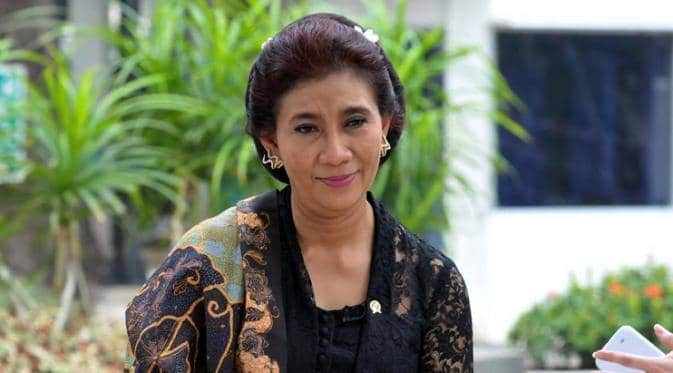
by Maureen | Nov 20, 2014 | 2014, Awareness, Being Thankful, Elections, Eye on Culture, Feminism, Government, Indonesia, Inspirational, Media, News, Politics, Prejudice, Respect, Scoops of Joy, Women's Rights, World Motherhood

Susi Pudjiastuti, Minister of Maritime and Fisheries
Big changes are taking place in Indonesia lately with the new President Joko Widodo (or as we Indonesians lovingly call him, Jokowi) taking office last month.
Six days after he took office, Jokowi announced his cabinet lineup to the public. Eight women out of a total of 34 have been elected as ministers. It was the highest number of female cabinet ministers that has ever been elected in our country’s history and demonstrates Jokowi’s courage in giving women an opportunity.
Gender equality opportunity seems to have a brighter future with this cabinet lineup.
One of the women ministers that has been elected is Susi Pudjiastuti. She was elected as Minister of Maritime and Fisheries.
The media have been talking about Susi all of a sudden. She even became a trending topic on Twitter. Her election as a minister created a big controversy here.
She was not someone that came from any political affiliate. She is a bit different compared with some other women in world politics, like Hillary Clinton or Angela Merkel; she is a business woman. She smokes, she doesn’t have a PhD or any prestigious titles lined up behind her name – she actually dropped out of high school and unlike some others, she didn’t drop out of school because she was poor, it was actually because she felt she wasn’t happy even when she was reportedly a bright student. She decided to follow her own path at the tender age of 17.
With roughly $75, she started her first entrepreneurship in Pangandaran, Central Java with a fishery business. In 1996 she formed her own company called PT. ASI Pudjiastuti Marine Product. After her business expanded throughout Asia and America, she realized she needed a fast and reliable way to transport the seafood products to the buyers. Then Susi Air was born. She built her own aviation company even obtaining her own pilot license. Her airline now serves publicly in many remote parts of Indonesia.
Sadly, the media coverage she received was not because of her achievements or the many awards she has received over the years. The media coverage arose because she has tattoos, because she smokes, is a social drinker and a single mom, formerly married to Caucasian men twice.
Her detractors started judging her personal life, discrediting her ability to hold her role as a minister while she jumped head first into her new job in the government and making the necessary changes.
Among the negative comments however there also has been a lot of support for Susi. I am one of those big supporters.
In my eyes, I see a strong woman, someone very capable and who seems to have a strong character and is very intelligent despite her lack of a college education. Being a successful, independent single mother will really inspire other single mothers in Indonesia. We now have the first single mother minister in the history of Indonesia.
For the Indonesian patriarchy system, this feels like a big breakthrough and already she is busy working hard to fix the maritime and fisheries industry. Jokowi believes in her and that she has what it takes to get the job done and to create breakthroughs.
Jokowi is leading the way by giving Susi Pudjiastuti and the rest of the women minister an opportunity to take important roles in the government.
I salute all of these women and wish them all the best in their new roles.
There are many women involved in politics worldwide these days. Do any female politicians inspire you? What do you think of the increased number of women’s involved in politics?
This is an original post to World Moms Blog from our writer and mother of one in Indonesia, Maureen.
The image used in this post is from Susi Pudjiastuti’s public Facebook page. You can view more images of the politician here.























